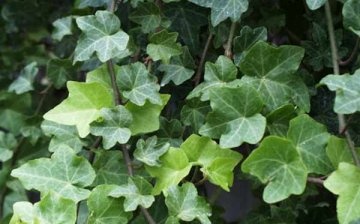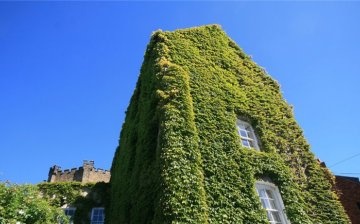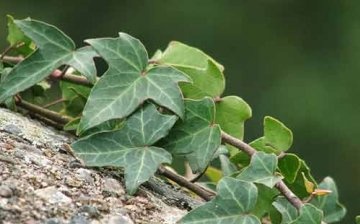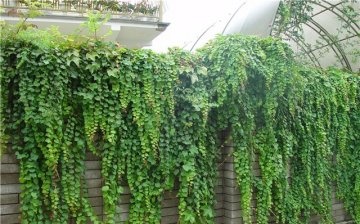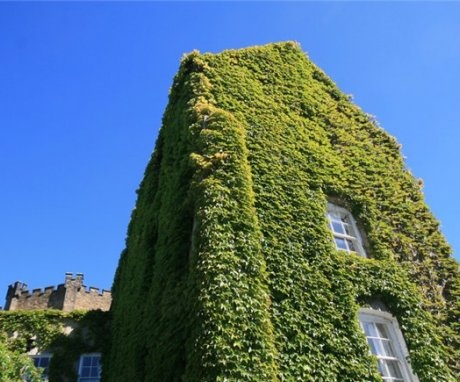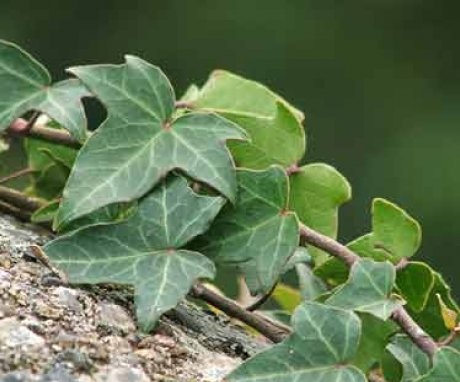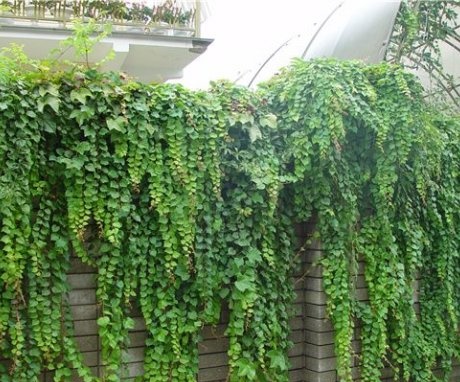Garden ivy. Growing and care
A beautiful but poisonous plant is garden ivy. It is unpretentious, but you need to handle it very carefully. Black berries that appear on old plants are especially dangerous. It is better to cut them off with gloves and throw them away. The ancient Greeks used ivy as an emblem of love and fun, and poets adorned their heads with a wreath of this plant.
Content:
Common types of garden ivy
Ivy, with its thick hairy and thin shoots extending from them, can spread up to 30 meters high, clinging to tree trunks, walls, fences with its adventitious roots.
There are 16 types of ivy known in nature, the most common are:
- Colchis ivy (Hedera coichica). The leaves are dark green, large, with a width of 17 cm in length reach 20 cm, matte, different in shape, have a specific nutmeg smell when rubbed. Ivy blooms in autumn. The flowers are of no decorative value, they are collected in a brush on peduncles up to 3 cm long, the petals of flowers reach 4.5 mm in length and 2.5 mm in width. Fruits ripen only next year, in spring. The most famous forms of Colchis ivy are arboreal, toothed, and purple. Grows on the Black Sea coast of the Caucasus;
- Ivy (Hedera helix). One of the most winter-hardy species. In length it can reach 30 m. Leaves are leathery, shiny. It blooms similarly to Colchis ivy. It has many decorative forms, differing in the configuration and color of the leaves: the winter form - with large light, finger-like - with large five-lobed, Baltic frost-resistant - with small, fringed - with a yellow border, etc. Common ivy grows in the lowlands and foothills of southern Europe, South -East Asia and Russia;
- Pastukhov's ivy (Hedera pastuchowii). Leaves are leathery thin, bright green, up to 10 cm long and up to 6 cm wide, the shape is varied - from lanceolate to rounded-heart-shaped, with wavy-angular or whole edges. The length reaches 10 m. Grows in Azerbaijan, Georgia, Dagestan.
Growing and care
In order to start growing ivy, you need to choose the right seedlings of one kind or another. They should be compact, the leaves should be shiny, and the root system healthy.
Do not buy seedlings with yellowed leaves and sluggish roots. Ivy shoots should be strong and numerous.
Landing ivy is produced in spring. When choosing a place for it, it should be borne in mind that ivy loves partial shade and moist soil containing humus and lime. The land must be constantly kept moist, additionally watered, if required.
It is not necessary to fertilize ivy, but if you want to speed up its growth, then it will be enough to water the plant with a water-soluble nitrogen fertilizer once in the spring.
Ivy propagation is carried out using cuttings and cuttings. For planting, cut off the stems with a top up to 15 cm long, remove the bottom 4 leaves and place in water 1/3 of the length. But it is better to plant in a box with soil consisting of garden soil and sand. After a month and a half, the cuttings form roots sufficient for planting in open ground.
In the northern regions of Russia, only the part of the ivy that is under the snow withstands wintering, and those shoots that do not cover with snow, as a rule, freeze out. In such cases, ivy is used as a ground cover or decoration for low fences.
The most important pest that infects the plant is the spider mite. The ivy is covered with cobwebs, and small bugs run along it. They can be translucent, yellowish, or red.
For treatment, it is better to use the drug Actellik. It is bred in water and sprayed on the leaves at weekly intervals. It is used until the complete destruction of insects and the recovery of the plant. As a rule, such problems occur on plants that are on the sunny side.
The use of garden ivy
Ivy is used in mainstream medicine as a form of cough medicine. One of these drugs is Gedelix. In folk medicine, it is used to treat a wider range of diseases. Various magical properties are also attributed to ivy; its leaves, juice and shoots are used for rituals, conspiracies and creating talismans.
Ivy is widely used in garden design. If you alternate planting ivy with ipomoea you can get amazingly beautiful compositions of vertical gardening. Ivy is an excellent material for creating small architectural forms in the garden: various figures of animals are made from a wire frame, which are wrapped around the ivy planted nearby. In this case, a regular haircut is connected to the usual care of the plant.
In regions where the upper part of the ivy does not freeze, the plant is able to curl any brick, stone or plastered wall of the building with a beautiful green carpet in the summer. Such walls look especially impressive in autumn, when the foliage changes color to yellow, orange, red.



